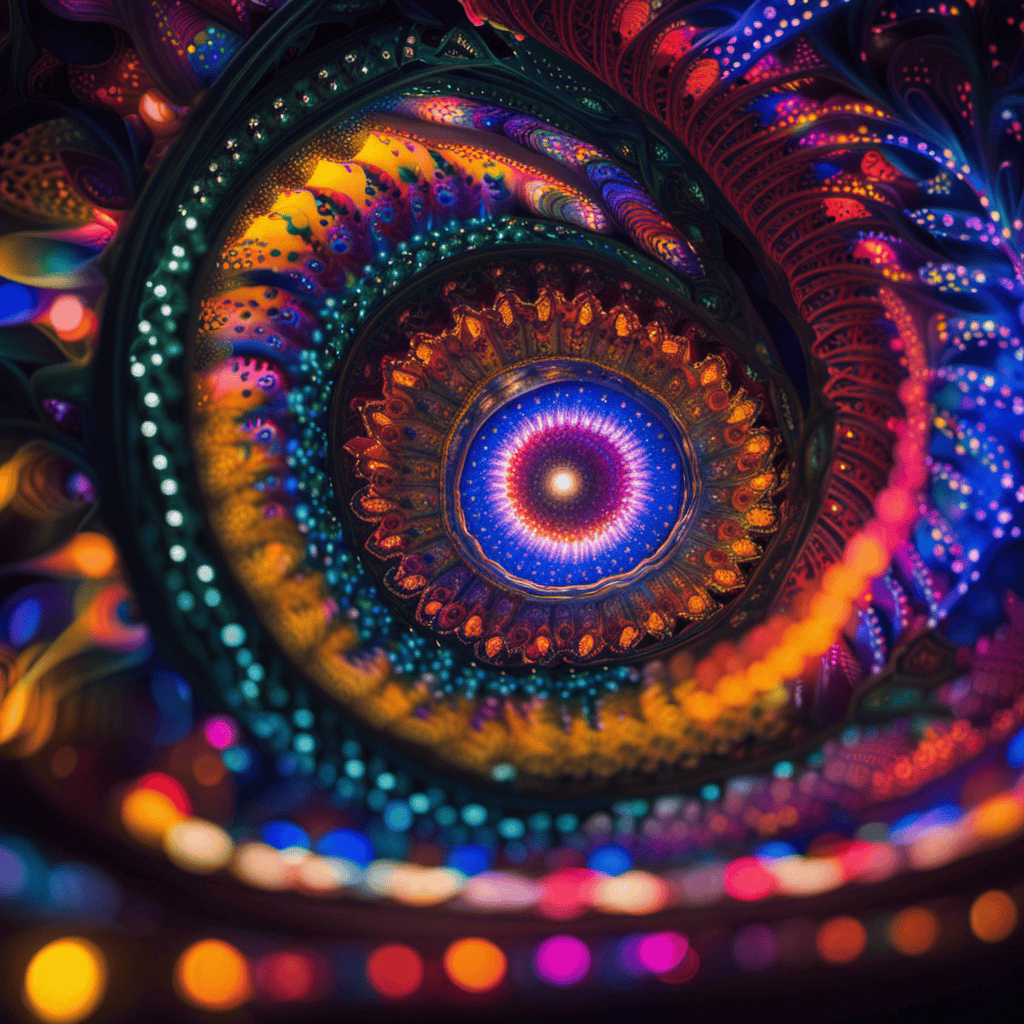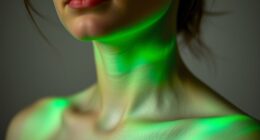Have you ever had the eerie experience of having intense dreams right when you drift off to sleep? It’s a phenomenon that many of us have experienced at some point in our lives.
As someone who is fascinated by the mysteries of the mind, I couldn’t help but delve into the science behind this intriguing occurrence. What I discovered is that our dreams during the initial stages of sleep can be incredibly vivid due to a combination of factors.
One of the key players in this phenomenon is REM sleep, a stage of sleep characterized by increased brain activity and intense dreaming. During this time, our brains are processing emotions and memories, which can contribute to the vividness of our dreams.
Additionally, stress and anxiety can play a role in the intensity of our dream experiences.
In this article, we will explore the science behind having vivid dreams when first falling asleep, delve into the world of lucid dreaming, and discuss techniques to enhance dream recall.
So, let’s embark on this fascinating journey into the realm of our sleeping minds.
Key Takeaways
- Vivid dreams when first falling asleep are a common phenomenon.
- Factors such as REM sleep, emotions, and memories contribute to the vividness of dreams.
- Stress and anxiety can affect the intensity of dream experiences.
- Understanding the science behind vivid dreams can help enhance dream experiences.
Understanding the Sleep Cycle
When I first drift off to sleep, my brain enters a fascinating journey through different sleep stages, each with their own unique characteristics and dreams. This journey is part of what’s known as the sleep cycle.
The sleep cycle is made up of several stages that repeat throughout the night, and understanding these stages can help explain why we have vivid dreams when first falling asleep.
The sleep stages can be grouped into two main categories: non-REM (rapid eye movement) sleep and REM sleep. Non-REM sleep is further divided into three stages: N1, N2, and N3.
N1 is the stage between wakefulness and sleep, when our brain activity starts to slow down. N2 is a deeper stage of sleep, characterized by a decrease in body temperature and heart rate. N3 is the deepest stage of sleep, also known as slow-wave sleep, when our brain waves slow down even further.
During REM sleep, our brain activity becomes more active, similar to when we’re awake. This is the stage where we experience vivid dreams. REM sleep is also associated with rapid eye movements and muscle paralysis, which prevents us from acting out our dreams.
Understanding the sleep architecture and the role of REM sleep in the sleep cycle provides insight into why we have vivid dreams when first falling asleep. The transition into the subsequent section about the role of REM sleep will further explore this fascinating phenomenon.
The Role of REM Sleep
REM sleep, or rapid eye movement sleep, plays a crucial role in our sleep cycle. It is during this stage that we experience vivid dreams.
Research has shown a strong correlation between the intensity of REM sleep and the vividness of our dreams. This suggests that REM sleep serves a purpose in facilitating the creation of rich and immersive dream experiences.
Discussing the purpose of REM sleep
As soon as I drift off to sleep, my mind takes me on a wild rollercoaster ride of dreams, serving as a captivating canvas for my subconscious to paint vivid images. One of the main purposes of REM sleep, or rapid eye movement sleep, is its importance in memory consolidation.
During this stage of sleep, the brain processes and strengthens memories, enhancing our ability to recall information and experiences. Research has shown that disrupting REM sleep can lead to memory deficits and difficulties in learning new tasks.
Additionally, REM sleep has also been linked to creativity. It’s during this stage that our brains make connections between seemingly unrelated ideas, allowing for novel and innovative thinking. This connection between REM sleep and creativity provides further evidence for the crucial role of REM sleep in our cognitive processes.
Transitioning to the next section, linking REM sleep to dream vividness, we can explore how these factors contribute to the incredibly vivid and immersive dreams we experience.
Linking REM sleep to dream vividness
Immersed in a world of vibrant sensations and fantastical narratives, our minds unleash their wildest creativity during the depths of REM sleep. This stage, characterized by rapid eye movements and increased brain activity, is closely linked to the vividness of our dreams. Research has shown that the more time spent in REM sleep, the more detailed and memorable our dreams become.
To explore this connection, some individuals have turned to dream journaling, recording their dreams immediately upon waking. This practice not only provides insight into the personal meaning behind dreams, but also helps to strengthen the recall of dream content.
On the other hand, sleep deprivation has been shown to decrease REM sleep and subsequently diminish dream vividness. As we delve into the next section on increased brain activity, we will see how this phenomenon contributes to the rich experiences we have during REM sleep.
Increased Brain Activity
Upon drifting into slumber, one’s mind becomes a swirling tempest of heightened neural activity, unleashing a torrent of vivid dreams. This phenomenon can be attributed to the increased brain activity during REM sleep, the stage of sleep when dreams are most likely to occur.
Dream neuroscience has shown that during REM sleep, the brain exhibits a level of activity similar to that of wakefulness, with increased firing of neurons and heightened communication between different brain regions.
Research using functional magnetic resonance imaging (fMRI) has provided valuable insights into the increased brain activity during REM sleep. Studies have shown that regions of the brain associated with visual processing, such as the occipital lobe, are highly active during dreaming. Additionally, there is increased activity in the amygdala, a structure involved in emotional processing, which may explain the intense emotions experienced during vivid dreams.
Furthermore, studies have demonstrated that the prefrontal cortex, responsible for executive functions such as decision-making and self-awareness, exhibits reduced activity during REM sleep. This reduction in prefrontal cortex activity may explain the often bizarre and illogical nature of dreams.
The increased brain activity during REM sleep plays a crucial role in the generation of vivid dreams. The heightened neural activity in visual processing regions, the amygdala, and the decreased activity in the prefrontal cortex contribute to the intense emotions and surreal experiences that characterize these dreams.
Transitioning into the subsequent section about emotional processing, it is important to delve deeper into the role of emotions in shaping dream content.
Emotional Processing
As we explored in the previous subtopic, increased brain activity plays a crucial role in the occurrence of vivid dreams when first falling asleep. However, another important aspect of this phenomenon is emotional processing. When we dream, our brains engage in a complex process of analyzing and interpreting emotions, allowing us to gain insights into our own feelings and experiences.
Dreams often contain symbolic representations of our emotions, serving as a means for our minds to process and make sense of our daily experiences. These symbols can be highly personal and subjective, reflecting our unique perspectives and desires. For example, a dream about flying may symbolize a sense of freedom or empowerment, while a dream about falling may represent feelings of insecurity or loss of control.
In order to better understand the emotional processing that occurs in our dreams, I have created the following table:
| Emotion | Symbol |
|---|---|
| Happiness | Sunshine |
| Fear | Dark shadow |
| Love | Heart |
| Anger | Fire |
Analyzing dream symbolism can provide valuable insights into our emotional state and help us gain a deeper understanding of ourselves. By unraveling the meaning behind these symbols, we can uncover hidden emotions and unresolved issues that may be impacting our waking lives.
Transitioning into the subsequent section, it is important to note that stress and anxiety can significantly influence both the content and intensity of our dreams.
Stress and Anxiety
Engulfed by stress and anxiety, our dreams can be profoundly influenced, altering both their content and intensity. Stress and anxiety have a direct impact on the quality of our sleep, and this includes the dreams we experience during the initial stages of falling asleep.
When we are stressed or anxious, our minds are preoccupied with negative thoughts and worries, which can infiltrate our dreams and make them more intense and emotionally charged. In order to manage stress and anxiety and promote more peaceful and relaxing dreams, there are various stress management and relaxation techniques that can be helpful.
These techniques include deep breathing exercises, progressive muscle relaxation, meditation, and guided imagery. Engaging in these practices before bedtime can help calm the mind and reduce stress levels, leading to more pleasant and soothing dreams.
Additionally, incorporating regular exercise into our daily routine can also contribute to better sleep and more positive dream experiences. Exercise has been shown to reduce stress and anxiety, promote relaxation, and improve overall sleep quality. By engaging in physical activity, we release built-up tension and energy, allowing our minds to unwind and our dreams to become more tranquil.
Transitioning into the subsequent section about sleep disorders and medications, it is important to note that while stress management and relaxation techniques can be effective in improving dream quality, there are instances where individuals may require additional support, such as sleep aids or therapy, to address underlying sleep issues.
Sleep Disorders and Medications
Transition: Now let’s delve into the fascinating world of sleep disorders and the medications used to treat them.
Current Subtopic: Sleep Disorders and Medications
When it comes to having vivid dreams when first falling asleep, it’s important to consider the possibility of an underlying sleep disorder. Sleep disorders can disrupt the normal sleep cycle and lead to unusual dream patterns. Conditions such as insomnia, sleep apnea, and restless leg syndrome have been associated with vivid dreaming and can significantly impact the quality of sleep.
To address these sleep disorders, medications are often prescribed. There are various types of sleep medications available, including benzodiazepines, non-benzodiazepine hypnotics, and melatonin agonists. These medications work by targeting different aspects of the sleep cycle to promote better sleep quality and reduce the occurrence of vivid dreams.
To better understand the relationship between sleep disorders and medications, let’s take a closer look at the following table:
| Sleep Disorder | Common Medications |
|---|---|
| Insomnia | Benzodiazepines, |
| Non-benzodiazepine hypnotics | |
| Sleep Apnea | Continuous positive airway |
| pressure (CPAP) therapy | |
| Restless Leg Syndrome | Dopamine agonists |
As we move forward, we will explore the phenomenon of lucid dreaming and its potential connection to having vivid dreams when first falling asleep.
Lucid Dreaming
Lucid dreaming allows individuals to actively participate in and control their dream experiences. It is a state of consciousness where the dreamer becomes aware that they’re dreaming and can manipulate the dream content.
There are various techniques that can be employed to induce lucid dreaming, such as reality testing, where individuals regularly question whether they’re dreaming or awake. Another technique is keeping a dream journal, where dreamers write down their dreams in detail, enhancing dream recall and increasing the likelihood of becoming lucid.
The benefits of lucid dreaming are numerous. Firstly, it provides an opportunity for self-exploration and personal growth. By actively participating in and shaping the dream, individuals can confront fears, practice skills, and explore their creativity. Secondly, lucid dreaming can be utilized for problem-solving. The dream state provides a unique platform for brainstorming ideas and gaining insights that may not be accessible during waking life. Additionally, lucid dreaming has been associated with improved sleep quality and overall well-being.
Transitioning into the subsequent section about dream interpretation, understanding the meaning behind our dreams can provide valuable insights into our subconscious mind.
Dream Interpretation
When it comes to exploring the significance of vivid dreams, I’ve always been fascinated by the hidden meanings behind them.
Dream symbols and their meanings can offer valuable insights into our subconscious minds.
To help interpret these symbols, I’ve found that keeping a dream journal and reflecting on common themes can provide a deeper understanding of our dreams and ourselves.
Exploring the significance of vivid dreams
As soon as I drift off to sleep, I’m amazed by the incredible significance and impact of those vivid dreams. Research suggests that the quality of our sleep plays a crucial role in the intensity and clarity of our dreams.
When we achieve deep and restful sleep, our brain’s activity during the REM (rapid eye movement) phase is heightened, leading to more vivid and memorable dreams.
Keeping a dream journal can further enhance our understanding of these dreams. By recording our dreams upon waking, we can capture the details and emotions that might otherwise fade away. This practice allows us to analyze recurring themes, symbols, and patterns, providing valuable insights into our subconscious.
By exploring the significance of these vivid dreams, we can gain a deeper understanding of ourselves and our inner thoughts and emotions.
Transitioning into the next section, let’s now explore some tips for interpreting dream symbols and meanings.
Offering tips for interpreting dream symbols and meanings
As we explored the significance of vivid dreams, it becomes clear that understanding the symbolism within these dreams can provide valuable insights into our subconscious mind. Analyzing recurring dreams, in particular, can offer a deeper understanding of our emotions, fears, and desires. To aid in the interpretation of dream symbols and meanings, it can be helpful to create a table that organizes common symbols and their possible interpretations. Here is an example:
| Symbol | Possible Interpretation |
|---|---|
| Water | Emotions, subconscious |
| Flying | Freedom, liberation |
| Teeth falling out | Insecurity, loss of control |
By referring to such a table, we can start to unravel the hidden meanings behind our dreams. This process of decoding symbolism not only enhances our self-awareness but also facilitates personal growth and development. Transitioning to the next section about enhancing dream recall, let’s explore techniques for remembering our dreams in greater detail.
Enhancing Dream Recall
Improving dream recall can lead to a more immersive and unforgettable dream experience. There are several techniques that can help enhance dream recall and increase the chances of remembering the details of your dreams.
One effective method is dream journaling. Keeping a dream journal by your bedside allows you to jot down any dreams you remember as soon as you wake up. This practice helps train your brain to pay more attention to your dreams and improves your ability to recall them.
Another technique is reality checks. Throughout the day, perform simple reality checks like looking at the time or trying to read something twice. This habit can carry over into your dreams, making it easier to recognize when you’re dreaming.
Additionally, incorporating a consistent sleep schedule and creating a calming bedtime routine can also improve dream recall. Ensuring you get enough quality sleep and giving your mind time to relax before bed can make your dreams more vivid and easier to remember.
By implementing these techniques, you can enhance your dream recall and fully embrace the experience of having vivid dreams when you’re falling asleep.
Embracing the Experience
Fully immerse yourself in the experience of dreaming by embracing the vivid imagery and emotions that transport you to another world. When it comes to having vivid dreams when first falling asleep, you can enhance the experience by increasing lucidity and using lucid dream induction techniques.
Lucidity refers to the awareness that one is dreaming while in the dream state. By increasing lucidity, dreamers can take control of their dreams, making them even more vivid and memorable.
There are various techniques that can be used to induce lucid dreams. One such technique is reality testing, where individuals regularly question their reality throughout the day. By asking yourself, ‘Am I dreaming?’ and performing reality checks, such as trying to push your finger through your palm or reading a sentence twice, you can train your mind to question reality in your dreams, leading to increased lucidity.
Another technique is keeping a dream journal. By recording your dreams immediately upon waking, you can enhance your dream recall and become more aware of the patterns and themes in your dreams. This increased awareness can then carry over into your dream state, making it easier to recognize when you are dreaming and increase lucidity.
Overall, embracing the experience of dreaming involves actively engaging with your dreams and taking steps to increase lucidity. By utilizing lucid dream induction techniques, you can fully immerse yourself in the vivid imagery and emotions that come with falling asleep and entering another world.
Frequently Asked Questions
Can vivid dreams when first falling asleep be a sign of a sleep disorder?
Vivid dreams when first falling asleep can indeed be a sign of a sleep disorder. Studies have shown that there’s a relationship between sleep disorders and the intensity of dream vividness during the initial stages of sleep. This suggests that there may be psychological implications associated with this phenomenon. Further research is needed to fully understand the underlying mechanisms and potential implications, but it’s clear that vivid dreams during the early stages of sleep can be indicative of a sleep disorder.
What are some common medications that can affect dream vividness when falling asleep?
There are several medications that can impact dream intensity when falling asleep. Antidepressants, such as selective serotonin reuptake inhibitors (SSRIs) and tricyclic antidepressants (TCAs), have been known to affect dream vividness.
Additionally, medications used to treat Parkinson’s disease, such as levodopa, can also alter dream intensity.
Other drugs like beta blockers, used for hypertension, and certain antihistamines have been reported to influence dream vividness as well.
It’s important to consult with a healthcare professional if you’re experiencing changes in dream intensity while taking any medications.
Can stress and anxiety contribute to having vivid dreams when first falling asleep?
Yes, stress and anxiety can impact the frequency and vividness of dreams in the initial stages of sleep. Research suggests that high levels of stress and anxiety can lead to disrupted sleep patterns, including difficulty falling asleep and increased awakenings throughout the night.
This can result in more opportunities for dreaming and potentially more vivid dreams. Additionally, stress and anxiety can also affect the content of dreams, often causing them to be more intense and emotionally charged.
The relationship between sleep quality and the frequency of vivid dreams when first falling asleep is complex and can be influenced by various factors such as medication, lifestyle choices, and overall mental well-being.
Is it possible to have lucid dreams when experiencing vivid dreams during the initial stages of sleep?
Yes, it’s possible to have lucid dreams even when experiencing vivid dreams during the initial stages of sleep.
Lucid dreaming techniques can be used to increase the likelihood of becoming aware and in control of the dream. By practicing reality checks and setting intentions before sleep, individuals can enhance their ability to recognize when they’re dreaming.
Additionally, interpreting dream symbolism can provide valuable insights into the subconscious mind, aiding in the development of lucid dreaming skills.
Are there any specific techniques or strategies to enhance dream recall for those who frequently have vivid dreams when first falling asleep?
To enhance dream recall for individuals who frequently have vivid dreams, there are several techniques and strategies that can be employed.
Keeping a dream journal is one effective method, as it allows for the immediate recording of dreams upon waking.
Additionally, practicing mindfulness and setting intentions before sleep can help improve dream recall.
Engaging in regular meditation and maintaining a consistent sleep schedule can also contribute to better dream recall.
These techniques have been supported by research and can be effective in enhancing dream recall for those experiencing frequent vivid dreams.
Conclusion
In conclusion, the phenomenon of having vivid dreams when first falling asleep is a fascinating aspect of the sleep cycle. Through increased brain activity during REM sleep, our minds engage in emotional processing and potentially even lucid dreaming.
This can be influenced by factors such as stress and anxiety, which may manifest in our dreams. By enhancing dream recall and embracing these experiences, we can gain valuable insights into our subconscious minds.
So, next time you drift off to sleep, prepare to embark on a detailed and evidence-based exploration of your dreamscape.









